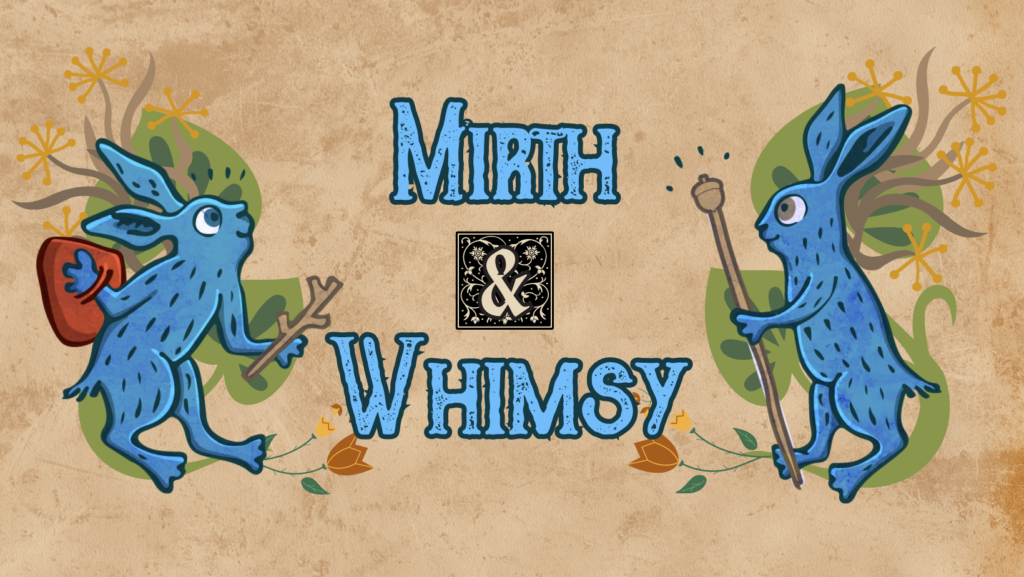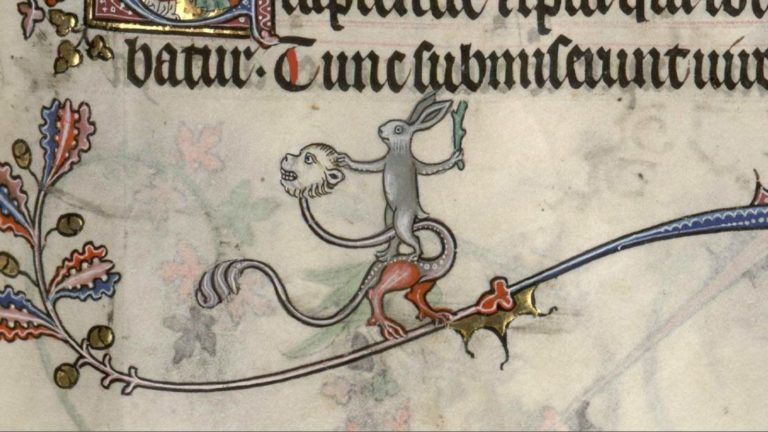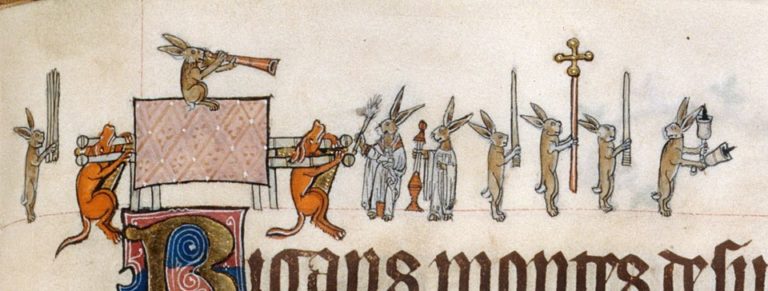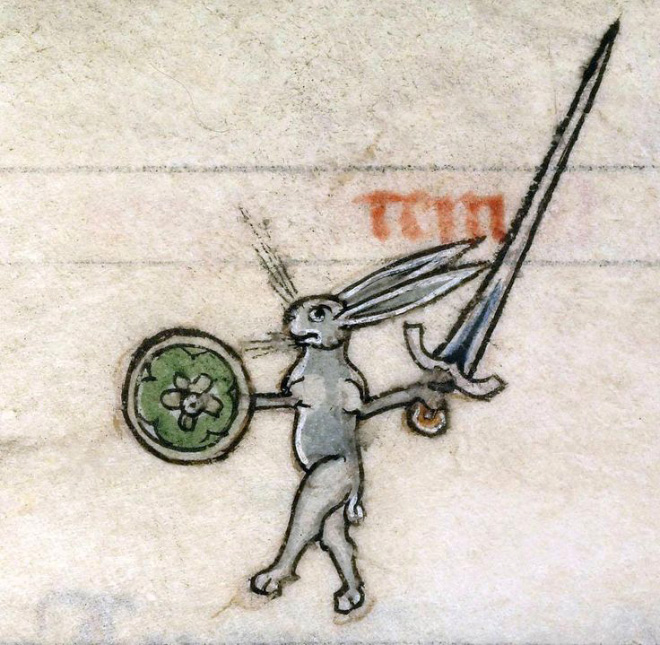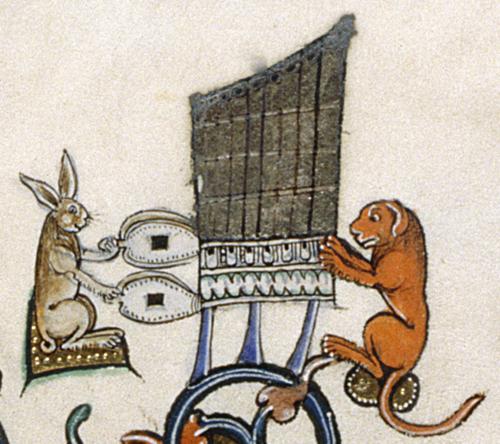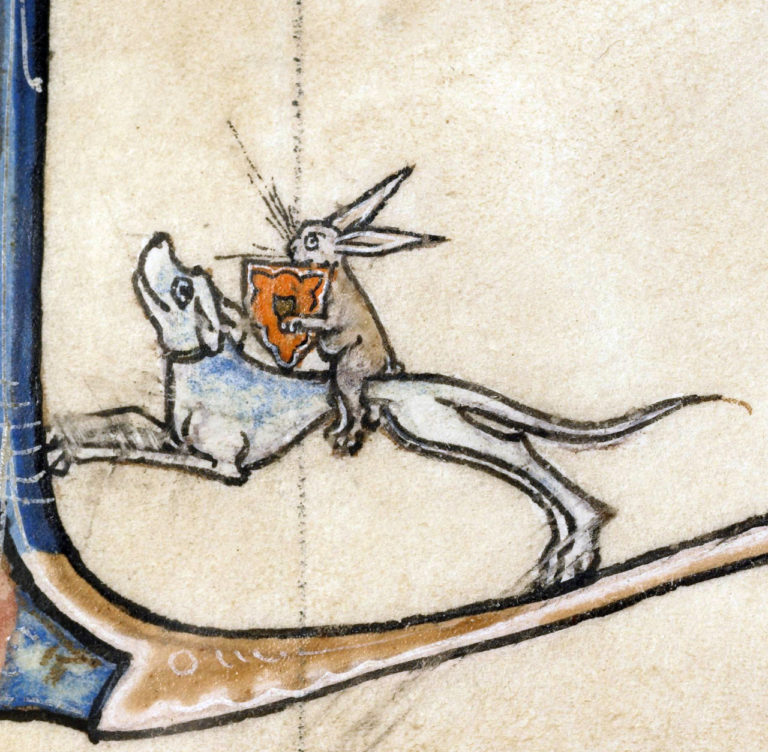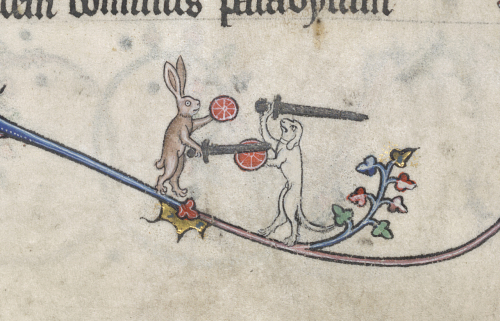The Story of Mirth and Whimsy
Once upon a time in the 16th century, in a quiet and peaceful monastery tucked away in the hills of England, there lived a monk named Brother Ignatius. He was a hardworking man, but even the most devoted of souls can grow bored of the same routine day after day.
Brother Ignatius spent his days copying texts in the monastery’s library. The library was a vast and dimly lit room filled with the smell of old parchment and the sound of scratching quills. A rather drowsy place, indeed.
One day, as he was copying a particularly dense text, a burst of childlike imagination overtook him, and he couldn’t resist the urge to let his quill dance across the margins of the parchment. He began to doodle, his imagination taking him far away from the dusty library. Soon, two rabbits appeared on the parchment, as if born from the very ink that flowed from Brother Ignatius’s quill.
He named them Mirth and Whimsy. Brother Ignatius, astonished by the miracle he had inadvertently created, watched in awe as Mirth and Whimsy leaped from the parchment, fully formed and as real as any other creature.
The rabbits, now full of life, looked up at their creator with fun and mischief in their eyes. Mirth expressed wonder and amazement at every new thing, laughing joyfully as they hopped from the pages. Whimsy began to jump about playfully, exploring their new surroundings with great interest and excitement.
Mirth & Whimsy set out into the forest of Whimsy Woods, determined to begin their own story as they explored the trees and brush of their new home.
Over time, the village of Willy-Nilly expanded, bringing new friends and new excitement to the forest. Now, Mirth & Whimsy take joy in watching over the visiting children who love to play in the shady glens and hills of Whimsy Woods.
With this year bringing the area of Whimsy Woods to our guests, Mirth and Whimsy are there to help you find the best shows and locations around the festival for your children. Look for them to find out what ORF productions they recommend!
History of Marginalia
Around 1450, a young German inventor named Johannes Gutenberg began work on a monumental task. It took him approximately four years, with many failures and successes, to complete. But when it was presented in 1455, the quality and style of his finished work would become a marvel to behold for centuries to come.
We are speaking, of course, of the Gutenberg Bible, the earliest major book printed in the West. But it is not the book itself we are focusing on today. Nor is it the marvelous invention of the printing press that sparked a revolution that would fling the world into an age where literature would become more accessible to the general public.
Instead, we are looking at what came before, when books were treasured items, painstakingly copied by hand and generally owned only by those with the means to commission them. Everyone has heard (and mourned) the great Library of Alexandria. What many do not know is that the library was said to have a massive number of scribes assigned to its halls. Whenever anyone arrived in port, their scrolls would be confiscated and brought to the library, where they would be painstakingly copied and added to the collection. Some rumors say that the library kept the originals while the copies were returned to the owners.
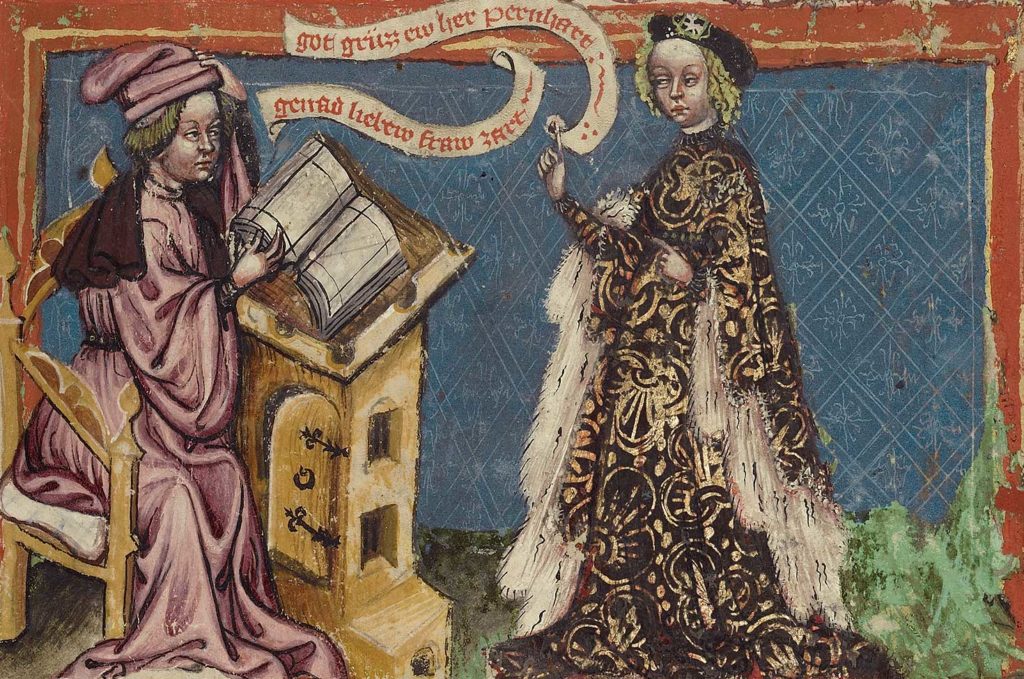
The practice of scribing books was by no means new. There was no such thing as copyright laws and as such, authors could not combat the pirating and alteration of their works. However, it was this very lapse in legal protection that might have allowed many historical texts to be conserved rather than purged. This was primarily the focus of those who scribed sacred texts, such as the Bible, during the medieval period. Monks were expected to devote their lives to worship, the reading and copying of sacred texts being considered a part of this. In the scriptorium, monks would serve as a part of their duty, doing the tedious work of rewriting each text word for word. Of course, we now know that with the constantly fluctuating political and religious ideologies of the time, this was the perfect opportunity to make a few ‘editorial changes’ to the supposedly sacred, non-fungible, writings. So maybe it should come as no surprise that the monks, on occasion, got bored.
Marginalia is, in the simplest terms, the annotations or illustrations that are written or drawn in the margins of a manuscript. Sometimes they are intentional additions where the writer is leaving notes for the reader or, in the case of the clergy, a means to further reference or explain the text. Other times, the scribes writing everything down would become considerably playful with their expensive inks, spending their hours drawing creative and humorous illustrations alongside the tales of Christ and his disciples. Prayer books, bibles, and all copied texts were subject to such illuminations, from the highly detailed and colorful to simple scribblings. And it was these playful displays of imagination that inspired the creation of Mirth & Whimsy.
